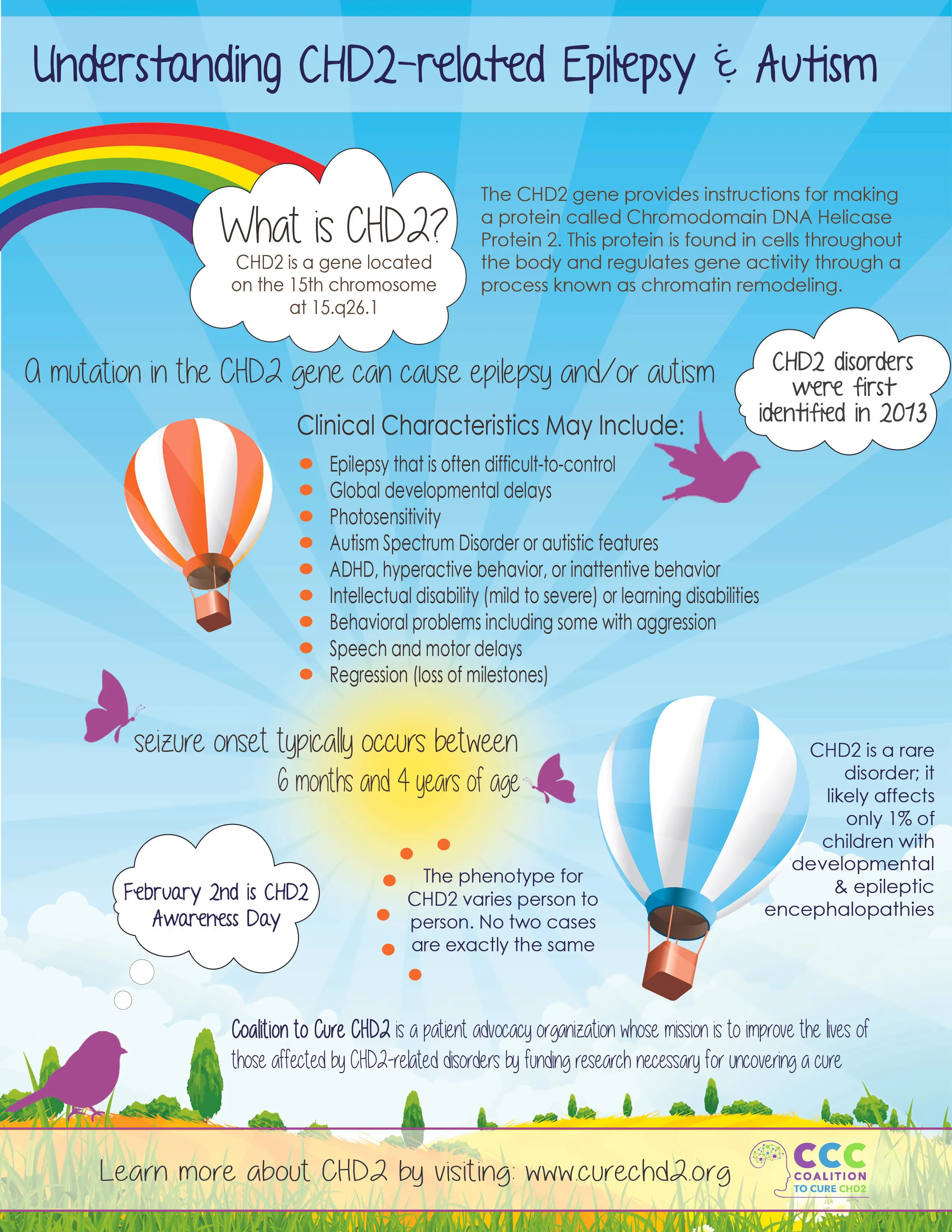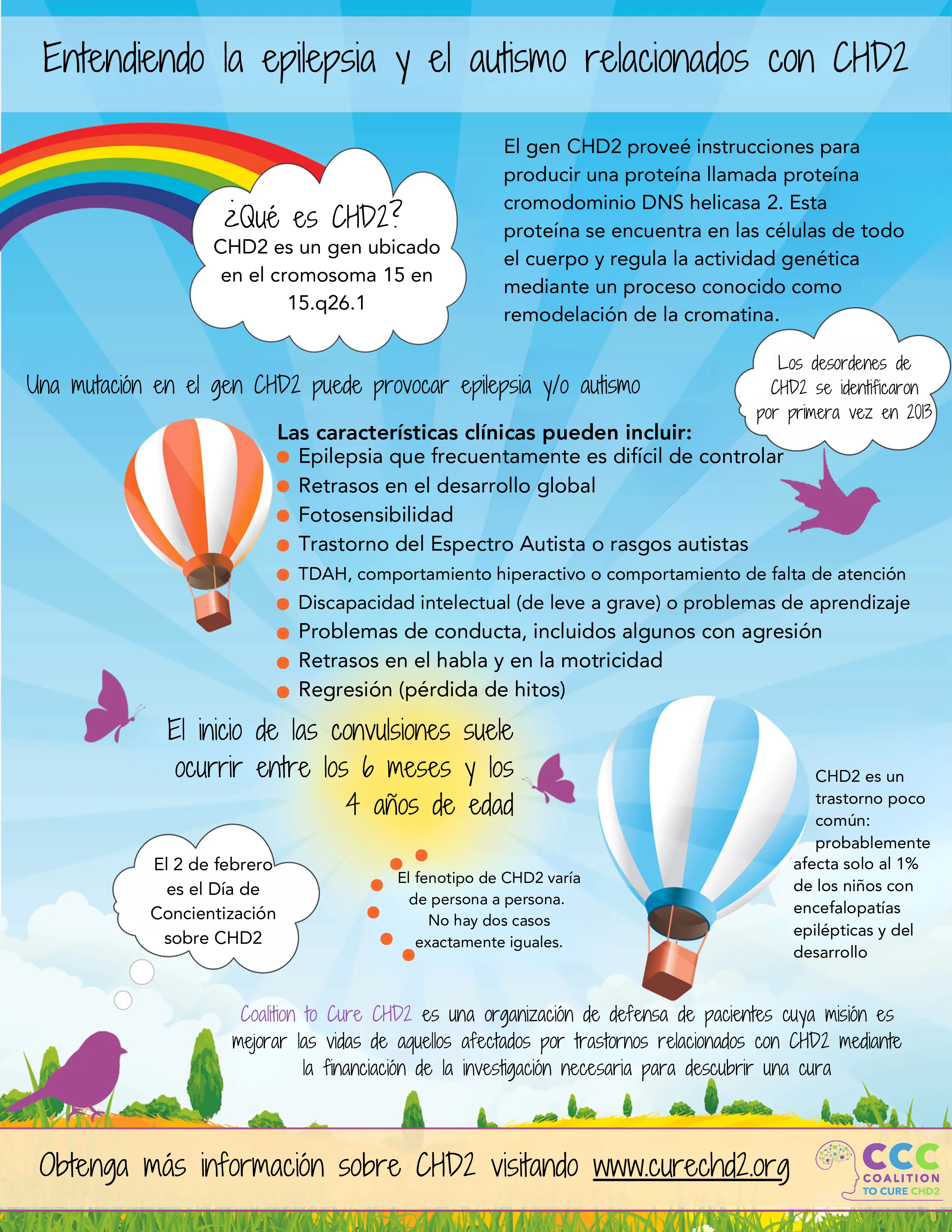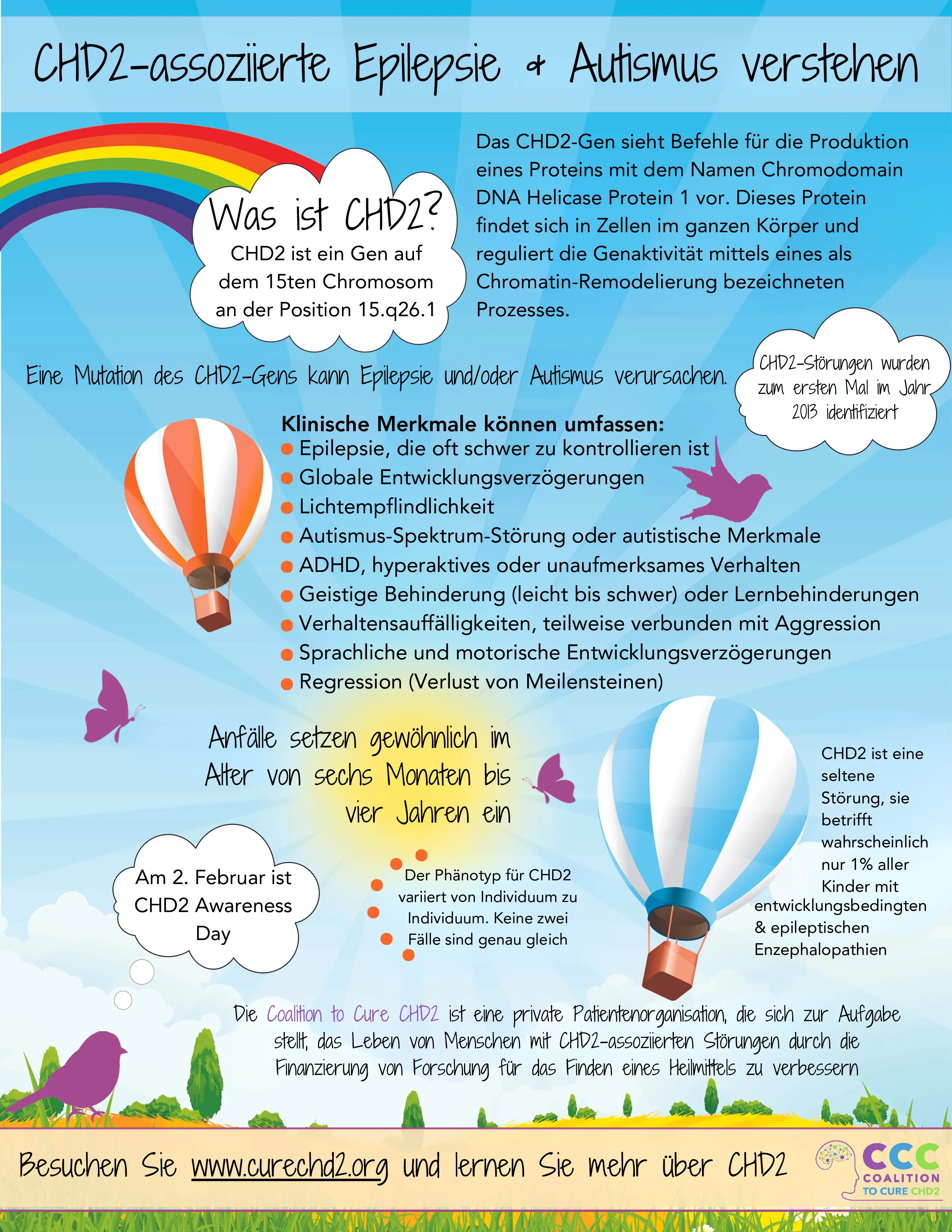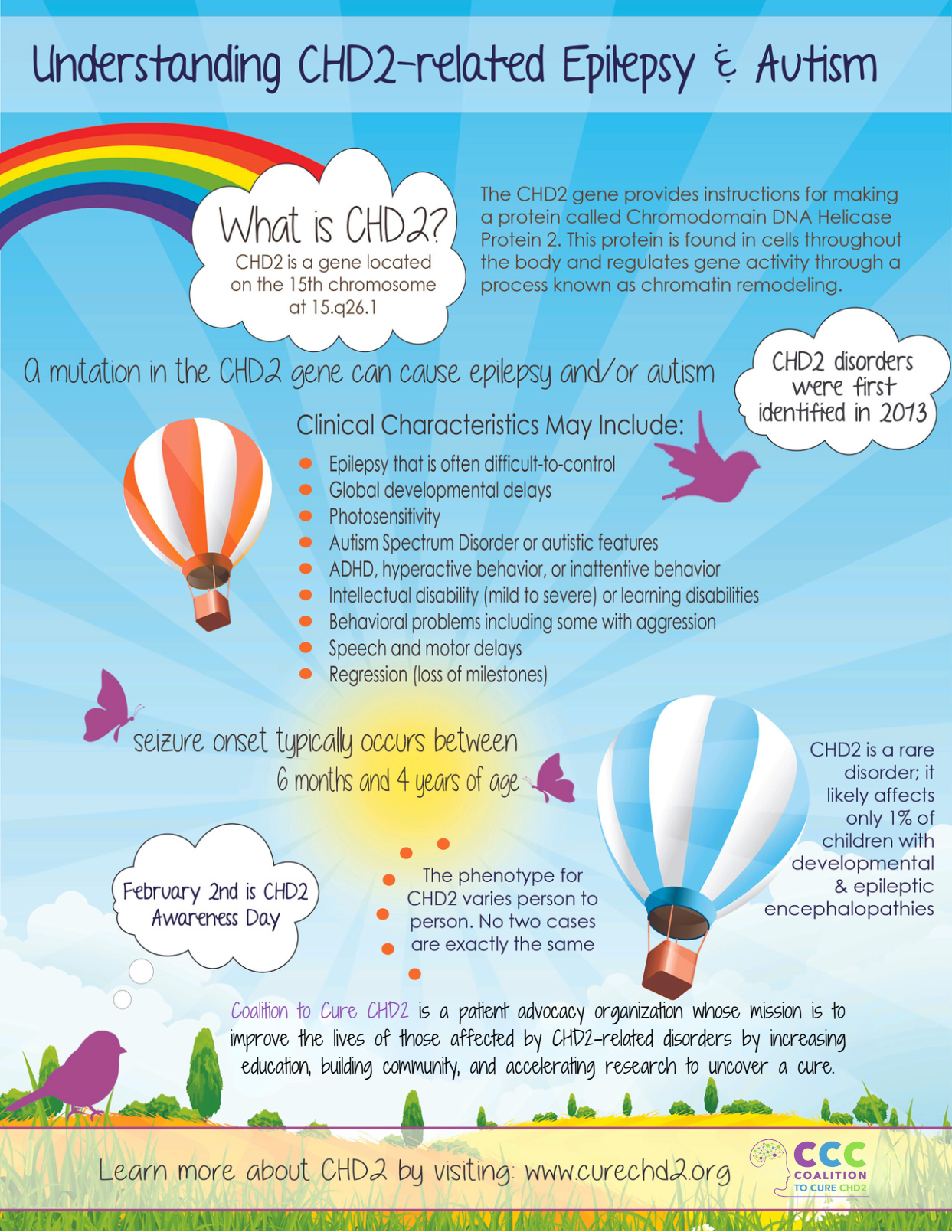What is CHD2?
CHD2 is a gene located on chromosome 15 that provides instructions for making a protein called chromodomain-DNA-helicase-binding protein 2. This protein regulates gene activity through a process called chromatin remodeling and may play an important role in the brain, although its exact function is not well understood. CHD2-related neurodevelopmental disorders are a group of seizure disorders that typically present in the first five years of life and may be characterized by refractory or drug-resistant epilepsy, developmental delays, and photosensitivity epilepsy caused by flashing lights. Other symptoms may include intellectual disability, autism spectrum disorders, neuropsychiatric conditions, low muscle tone, and challenging behaviors. The disorder is diagnosed by molecular genetic testing and treated with anti-seizure medication and therapies for autism, intellectual disabilities, and speech delays. The prevalence of CHD2 is unknown but it is thought to be underdiagnosed.
CHD2-related Neurodevelopmental Disorders
Highlights
Individuals with CHD2-related neurodevelopmental disorders most commonly suffer from (1) refractory epilepsy and (2) developmental delays
Another clinical feature that may be unique to CHD2 disorders is photosensitivity epilepsy, which involves seizures caused by flashing lights.
There are no treatments or therapies specific to the CHD2 genetic disorder, but because a majority of individuals diagnosed with a CHD2 disorder have been diagnosed with autism spectrum disorders, intellectual disabilities and/or speech delays, therapies commonly used to treat these clinical features are commonly used to treat individuals with CHD2. These therapies include, but are not limited to, speech therapy, occupational therapy, physical therapy, behavioral therapy and psychological and developmental therapy. Specialists commonly seen include neurologists, orthopedists, dieticians, special needs dentists, cardiologists, gastroenterologists, geneticists and chiropractors.
A number of researchers and pharmaceutical companies are either currently working on, or are considering working on or investing in, the development of drugs or precision therapies that may improve the lives of those living with CHD2, or that may even lead to a cure for this disorder.
Coalition to Cure CHD2 was organized in 2020, which has the mission of raising awareness of this disorder and raising funds to fund research to find a cure for the disorder.




Author: Christine Salmi, Co-Founder and Co-President of Coalition to Cure CHD2, Inc.
Reviewed and Approved by: Dr. Gemma Carvill, Asst. Professor, Department of Neurology at Northwestern University Feinberg School of Medicine, Chicago, Illinois, and Dr. Heather Mefford, Center for Pediatric Neurological Disease Research, Department of Cell & Molecular Biology, St. Jude Children’s Research Hospital, Memphis, Tennessee
Excerpted from: The medical/clinical information included in this submission comes from presentations and webinars presented by Coalition to Cure CHD2's Chair of its Scientific Advisory Board, Dr. Gemma Carvill, who is an Assistant Professor in the Department of Neurology at Northwestern University Feinberg School of Medicine in Chicago, Illinois, and is a leader in the field of CHD2 research. Other clinical/medical information in this submission comes from a natural history study conducted of 59 CHD2 families in 2018, which was created and led by Dr. Anne Berg, Research Professor at the Ann & Robert H. Lurie Children's Hospital of Chicago and the Northwestern Feinberg School of Medicine. The results of Dr. Berg's natural history study can be found on Coalition to Cure CHD2's website, www.curechd2.org under the "Science" "Natural History Study" tabs.

